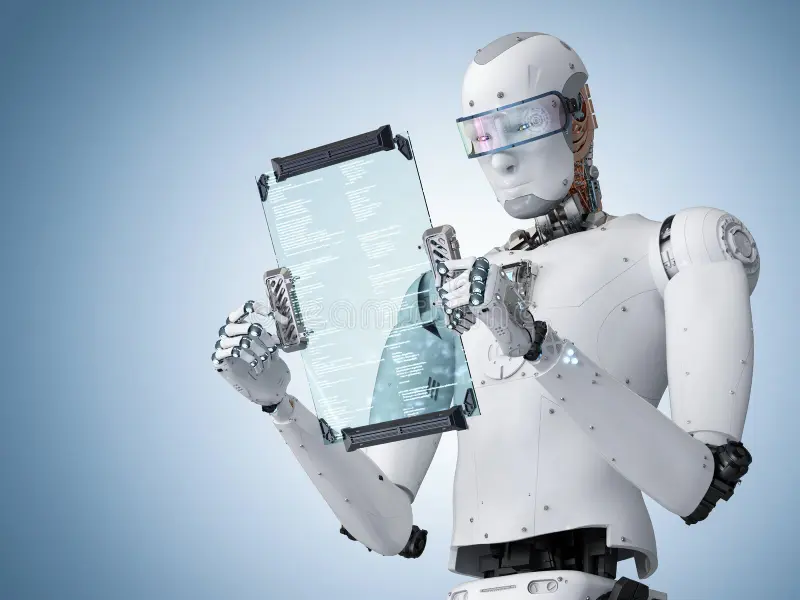
Neural networks are employed almost everywhere. They make predictions, perform complex calculations, generate articles, stories, and even create paintings. But what about coherent translations — is that possible, and how close are the processed texts to the original? And is it true that AI will soon replace human translators? Let’s find out.
Is It Really Possible?
Of course, as we all rely on Google.Translate already. Nowadays, algorithms can recognize speech; they perform the transliteration of image captions and can even reproduce in audio format, how a phrase sounds in French, Chinese, or even the fictional Elvish language.
It all started at the end of the 1940s, with the development of the concept of machine information processing. The Georgetown-IBM experiment in 1954 marked a milestone when a machine correctly translated 60 sentences from Russian to English and even corrected spelling errors in words.
Although the experiment’s results were later criticized — the sentences were simple and clear in meaning, so the machine had no chance to err — this led to the technology known as Rule-Based Machine Translation (RBMT), based on grammatical rules.
The second model, SMT, which is widely used now (both independently and in conjunction with other technologies), was developed in the 2000s. It compares arrays of uploaded data — texts in the source language and those translated by humans. Algorithms analyze the statistical semantic combinations of words in sentences in both data blocks and choose the correct option based on these data.
In November 2016, Google introduced Google’s Neural Machine Translation, which utilized solely neural networks, announcing the program’s shift to deep learning. This new model does not break sentences into words but focuses on the phrase, comparing it with other phrases, allowing for a more accurate conveyance of meaning. As for learning, Google’s Neural Machine Translation can “understand” language pairs it was not taught.
Types of Neural Network for Text Translation
Indeed, there are many applications. There are paid and free ones, specialized (for programmers, doctors, or lawyers, for instance), and for the general public. Let’s talk about the most well-known:
- Yandex Translator – uses AI in conjunction with a statistical system, with the results evaluated by the CatBoost algorithm that chooses the best of the two options.
- Google Translate – uses only a neural network, excluding the statistical model. The program makes direct translations from one language to another (over 100 languages in total), bypassing the intermediate stage of translating the source into English and then into the user-requested language.
- DeepL – based on convolutional neural networks, it works with any documents, from literary stories to scientific papers. The final material can be edited and formatted within the application.
- Smodin – a service for copywriters that can compose essays and perform transliteration from several languages simultaneously (ranging from websites to artistic and scientific literature).
All programs recognize speech and can automatically identify captions in photos. They can edit completed documents, and Smodin even evaluates authors’ works and checks for plagiarism.
Moreover, services have emerged that allow working with video. HeyGen is a neural network for nearly professional dubbing into French, Spanish, Portuguese, and Indian, while preserving the character’s voice on screen. And that’s not all. The neural network adapts the person’s facial expressions and lip movements, making the video sequence look realistic. The capabilities of HeyGen can be assessed by numerous dubbed meme clips.
Pros and Cons
Translation programs help with studying, work, and entertainment. Of the main advantages:
- accessibility – most online services are free (in their basic versions for sure);
- simplicity – thanks to an intuitive interface, the application itself will suggest what to do and how;
- expanding communication possibilities – for example, in correspondence with users from other countries in messengers, social networks, or while on vacation;
- speed – you can translate text with a neural network in a couple of seconds.
However, there are also downsides. And the main one is inaccuracy. This is even acknowledged by Chat GPT, confirming that the result of processing information depends on software settings and the type of task being solved.
Artificial intelligence does not understand the wordplay in literary works and cannot convey emotional coloring. When processing specialized documents, AI can distort the meaning or give an incorrect interpretation to specific definitions. Therefore, it’s better not to trust legal and technical documentation to AI.
Technologies are evolving and becoming smarter. Algorithms can now accurately convey the overall meaning of the source and no longer commit gross errors, as was the case 5 years ago. But it is still too early to say that neural networks will soon replace humans; rather, they can be considered assistants.

